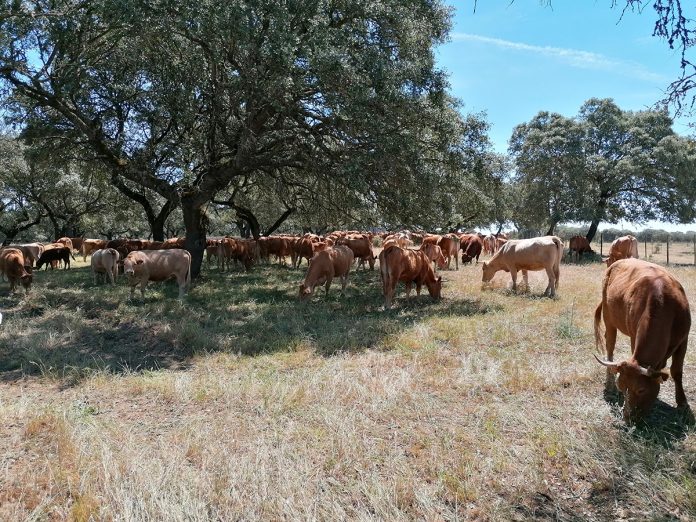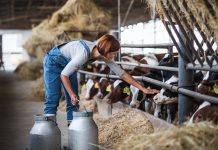Paul Newell Price of ADAS reflects on the future of permanent grasslands (PG) in Europe within the frame of the Horizon 2020 SUPER-G Project
Virtually any rural landscape in Europe includes grassland from small “patches” to whole valleys covered in grasses and herbs. Much of this is ‘permanent grassland’; defined in most European countries as any land dominated by grasses or herbs that can be grazed or mown, and which has not been part of an arable rotation for five years or more. In addition to supporting food such as milk and meat, PG deliver a wide range of environmental services including carbon storage, supporting biodiversity, pollination, regulating climate and water flow, preventing erosion and providing cultural value through beautiful landscapes.
Permanent grasslands occupy around 50 million hectares in the European Union, accounting for 30% of the total Utilised Agricultural Area (UAA). However, they are under threat from a variety of activities and changes in our environment including cultivation, urbanisation, afforestation, climate change and abandonment. The farming community and society as a whole are presented with a number of decisions around how to manage PG in a changing world, and what policies should be in place to encourage good management and conservation of PG?
SUPER-G (SUstainable PERmanent Grassland systems and policies) is a Horizon 2020 project directly involving 21 partner organisations in 14 European countries. The project is working with farmers, advisers, civil-society groups, citizens, consumers and policy makers to better understand the importance and functioning of European PG. The project addresses several key questions, including:
- How does PG compare with other land uses in terms of the services they provide?
- What are the current challenges for farmers in managing PG and what are their future concerns and priorities?
- How much confidence do farmers have in adapting to change?
- What motivates them to change PG management practices, and are there any barriers to these changes?
It is also important to understand public preferences for landscapes provided by PG, and the ecosystem services which they deliver.
The SUPER-G Project
The SUPER-G Project is addressing these and other questions through a variety of activities. The University of Göttingen is leading the development of a new PG typology to help improve communication about grasslands across Europe. The typology classifies grasslands by management intensity, incorporates the presence or absence of trees and shrubs, and will be linked to the EUNIS (European Nature Information System) habitat classification. It is also important to understand the role of PG within European farming systems, and the University of Turin are using Farm Accountancy Data Network (FADN) data to see how stocking rates and the share of PG within different farming systems varies across Europe.
But how does PG in its various guises deliver for a range of environmental services? Wageningen Research have led an integrated systematic review, which indicates that PG can deliver multiple services more efficiently than cultivated land but that in most circumstances it does not deliver climate and water regulation as effectively as forests and woodlands. For PG itself, there appears to be a choice between higher output, to efficiently meet demand for meat and dairy products, and providing multiple public goods and services.
Understanding how farmers meet the challenges of managing PG is vital to promoting best practice. With this in mind, the University of Ljubljana is leading activities in 23 SUPER-G farm networks. Through a series of ‘co-innovation’ workshops, researchers and advisers worked with farmers to identify the key management challenges, and the innovations they would like to test. On farms and experimental platforms, we are looking at the pros and cons of various management options, including introducing multi-species swards; adjusting cutting and grazing regimes; the use of rising plate meters to monitor grass growth; and virtual fencing to control livestock movements for improved grazing and nature conservation.
Creating an environment that facilitates optimal PG management and reduces the barriers to adopting innovative practices is crucial for the future of sustainable PG systems. To understand the attitudes and behaviours of farmers, the priorities and preferences of citizens, and the policies needed to support sustainable PG management, the University of Newcastle are leading a series of activities reviewing facilitators and barriers to the adoption of PG management options. This includes research on understanding public views and preferences for landscapes, and the ecosystem services they provide. These topics were presented and discussed at a series of SUPER-G ‘stakeholder’ webinars in June 2021. The programme and the webinars can be viewed on the SUPER-G website.
With two years to go in the SUPER-G Project there is plenty of opportunity to discuss what we mean by sustainable PG management; and what policies and incentives are needed to support it?
For more information, please visit the SUPER-G website or you can contact Dina Lopes (dlopes@consulai.com) or Paul Newell Price (paul.newell-price@adas.co.uk).

This project has received funding from the European Union’s HORIZON 2020 Research programme under the Grant Agreement no. 774124.
Please note: This is a commercial profile
© 2019. This work is licensed under CC-BY-NC-ND.











